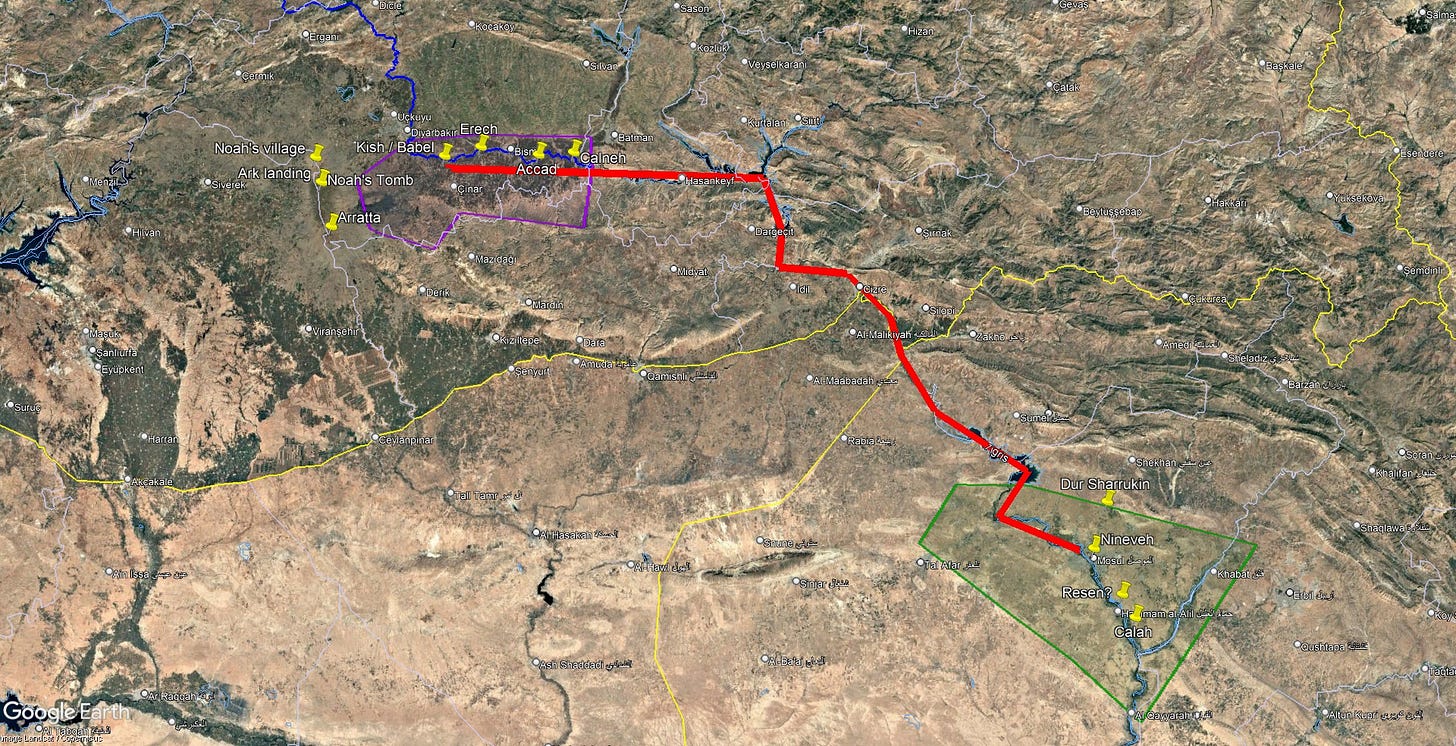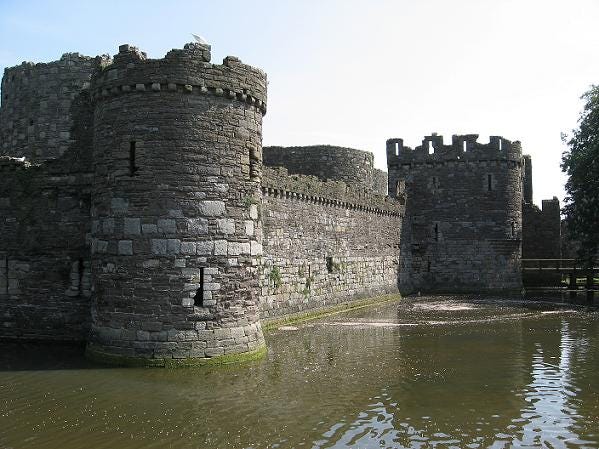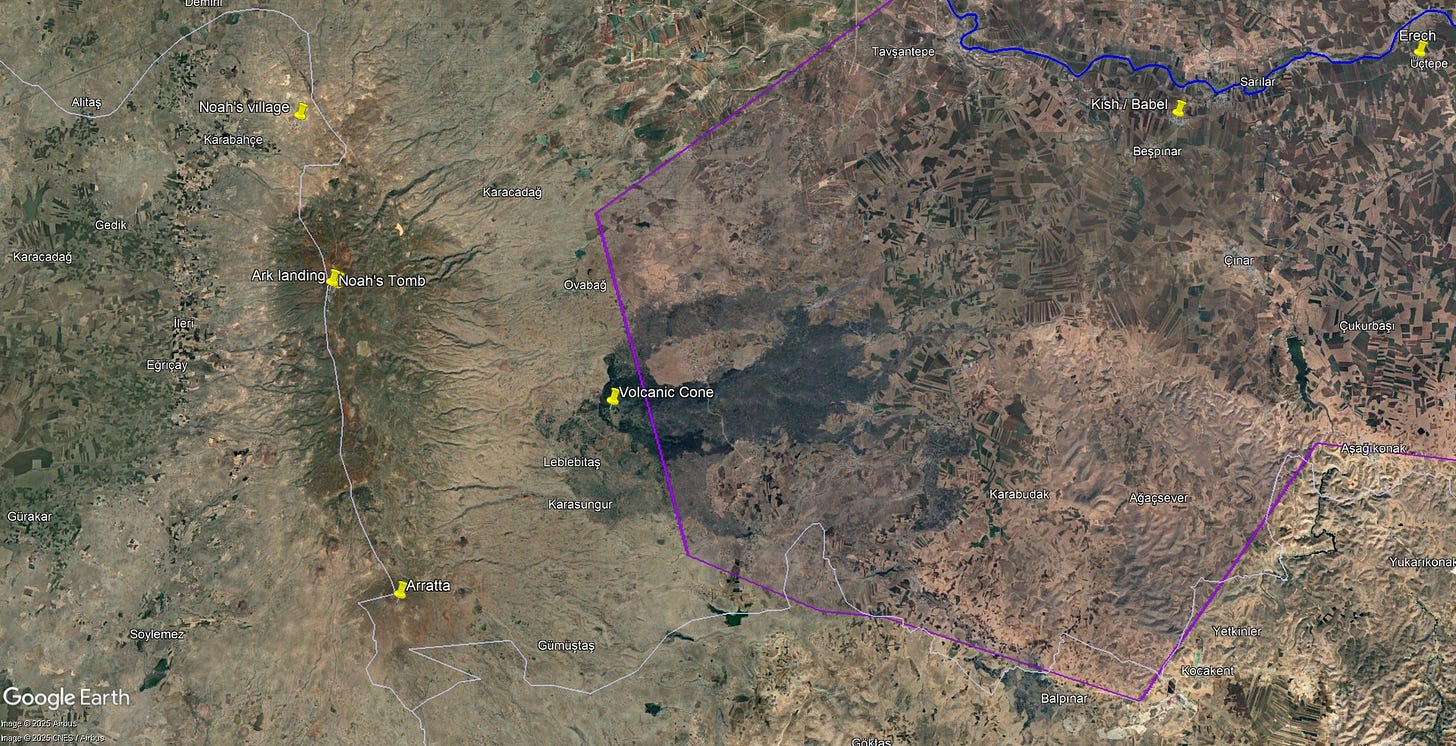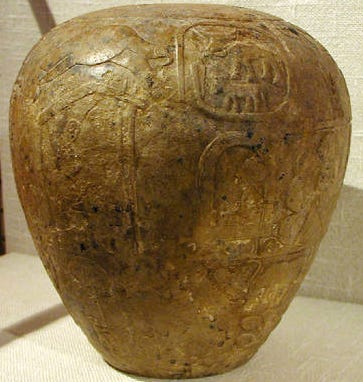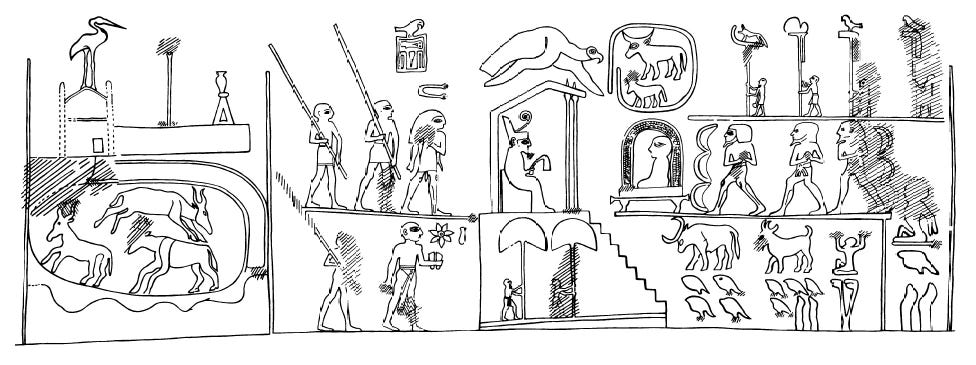The Life of Nimrod - IV
His Second Kingdom
In the previous episode on The Life of Nimrod, we saw his first kingdom included the cities of Babel, Erech, Accad, and Calneh along the Upper Tigris River Valley in the modern province of Cinar, Turkiye. According to the Quito Manuscript from the Inca of South America, Noah had preached to the people at Babel in 2197 BC, instructing them to go to the lands of inheritance that had been allotted to them. But five more years passed before the people finally received the motivation that forced them to leave Babel.
Nimrod doubtless used every trick in the book to keep them from leaving. But on that fateful morning in 2191 BC, the nearby volcano erupted, sending a fiery cloud of steam and ash towards the city. Suddenly, everyone seemed to be speaking gibberish, everyone except one’s own clan and family, that is.
One might think that Nimrod would take the hint and turn away from his ambitions. However, that is not what happened. He fled downstream on the Tigris River about 220 miles and began his second kingdom in the land allotted to Shem’s son, Asshur. There, Nimrod built a second set of four cities, going downriver, just as he had in the first kingdom of Babel. Nineveh would remain a powerful city for another 1,500 years before it was destroyed by Cyaxares the Mede in 612 BC.
Nimrod’s Second Empire
Nimrod’s choice of the land of Asshur to build his second kingdom was strategic. He had not given up on the idea of ruling the world. He wanted one government to rule all men to achieve his goal of regaining the Way of Cain and the pre-flood technology and standard of living. The primary obstacle to his plans had always been his Uncle Shem.
By building his new kingdom on the rivers in Asshur’s territory, Nimrod initiated an effective strategy that has been used by tyrants ever since. He was controlling the territory of the people he intended to dominate by controlling their travel and commerce.
Thousands of years later, King Edward Longshanks used the same strategy to control the people of Wales, who refused to be ruled by him. In AD 1282, Longshanks built a ring of castles along the rivers and ports of Wales in order to prevent that Kingdom from finding a successor to their King, Llewellyn the Great, whom Edward had paid a traitor to assassinate. These are called the Edwardian Castles of Wales, many of which are still standing today. While they are beautiful, they are the dark, cold legacy of control by a foreign king.
Enmerkar and the Lord of Arratta
At this time in history, we have a story recounted on clay tablets from Sumeria that tells the story of what Nimrod did after the Dispersion. It is called En-mer-kar and the Lord of Arratta. In the first episode, we recounted how Nimrod’s mother had named him “Mer”, meaning “Storm,” as a child. At Babel, he became known as “Lord Storm the Hunter” or “En Mer Kar” in Sumerian.
During the Kingdom of Babel, Nimrod’s mother Naamah had been living with her second husband, Ham, in the city of Arratta on the south end of the mountain where the Ark had landed. She was apparently afraid to come down to reside on the plains below. But perhaps she had been visiting the City of Babel on the day that the volcanic cone near Babel erupted only ten miles from the City of Arratta. The eruption may have overcome her fear with a greater fear and caused her to go with Nimrod when he fled down the river to the Land of Asshur.
In the tale of Enmerkar and the Lord of Arratta, the Lord of Arratta is to be identified as Nimrod’s grandfather, Ham. Enmerkar sent messengers to the Lord of Arratta demanding that he submit to him because the lady Inanna (Naamah) had chosen Enmerkar to be her husband. This began the idea in the Ancient Near East that whoever the goddess Ishtar chose to be her husband was the true King of the World. Ishtar was a later name for Inanna, which in turn was a name of Nammu, or Naamah, from Genesis 4:19-24.
The third marriage of Naamah to Nimrod is depicted on the Narmer Macehead from Egypt. It shows her as a goddess being carried on a covered litter up to King Narmer (Nimrod), who sits on the throne. Above her head is the sign of the mother cow and bull calf, which was later used to mean the goddess Hathor (an Egyptian deification of Naamah).
The Re-Invention of Writing by Nimrod
In the tale of Enmerkar and the Lord of Arratta, Enmerkar (Nimrod) kept sending a messenger to the City of Arratta to demand that the Lord of Arratta submit to him by sending him gold, silver, lapis lazuli, and precious stones to adorn the new temple he had built in Kulaba, which was either the City of Nineveh or the City of Uruk, which he later built about 100 miles down the river from Nineveh. The messenger kept forgetting the message. So, Enmerkar (re)invented writing words on clay tablets so that the messenger could read and remember the message.
His speech was substantial, and its contents extensive. The messenger, whose mouth was heavy, was not able to repeat it. Because the messenger, whose mouth was tired, was not able to repeat it, the lord of Kulaba patted some clay and wrote the message as if on a tablet. Formerly, the writing of messages on clay was not established. Now, under that sun and on that day, it was indeed so. The lord of Kulaba inscribed the message like a tablet. It was just like that. The messenger was like a bird, flapping its wings; he raged forth like a wolf following a kid. He traversed five mountains, six mountains, seven mountains. He lifted his eyes as he approached Aratta. He stepped joyfully into the courtyard of Aratta, he made known the authority of his king. Openly he spoke out the words in his heart. The messenger transmitted the message to the lord of Aratta…
Nimrod’s Conquest
According to the Sybils, after the tongues were confused at Babel, there was a war between Kronos and Titan. The Greeks mythologized the three sons of Noah as the Titans, Ipetus (Japheth), Titan (Shem), and Kronos (Ham). Their father was Ouranos, also called the Titan Gyges, meaning grandfather Noah. The Olympian gods of the Greeks were Zeus (Cush), and his lieutenants Poseidon (Sidon) and Hades (Heth), who were the two oldest sons of Canaan. Herakles, his champion, was the Greek version of Nimrod.
Diodorus Siculus records the deeds of Ninus (Nimrod), saying that he conquered the entire world in seventeen years. His conquest reached all the way to Cappadocia, which brought the sons of Javan under his rule. This would have been the period from 2191 to 2174 BC. At this very early time in history, Nimrod’s army was made up of only twenty men.
However, Nimrod’s war with the Titans was just getting started. In the next episode, we will explore the Clash of the Titans.



